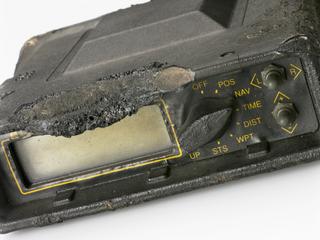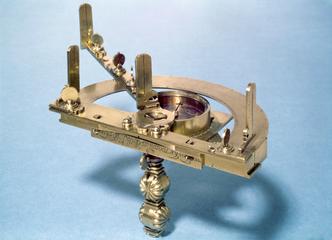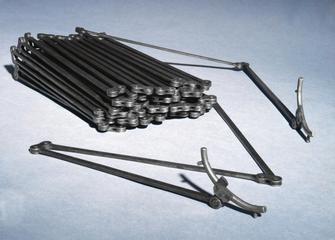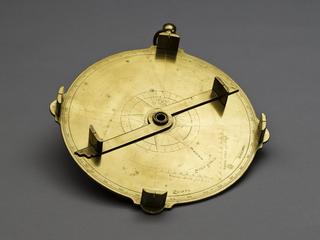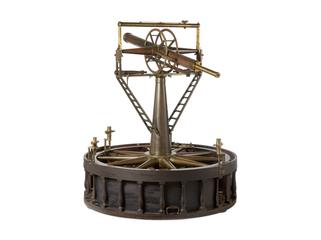
Rangefinder type sextant.
Naval rangefinder designed by Thorsten Nordenfelt in 1884, probably made by C.F. Casella and Company, London. Not signed, no marks. Anodized oval-pattern frame and anodized limb, wooden handle. Three exchangeable alloy scales, one is for an elevation of the eye of 96 feet, from 250-14,000 yards; one of for an elevation of the eye of 96 feet, from 250-20,000 yards; one if for an elevation of the eye of 47 feet, from 200-14,000 yards. No vernier, but two indicating lines; one is moved by a tangent screw, the other is rigid with the index arm. The tangent screw and clamping screw are on the back of the index arm. Index-glass adjustment by lever; adjustment of the horizon glass by screws. No magnifier. Threaded telescope bracket in two parts, fitted for correcting collimation error; perpendicular adjustment by rising-piece and a milled collar. Telescope (190 mm, large objective), erect image; telescope (124 mm, large objective, ocular missing), erect image. No box. This instrument was patented by Thorsten Nordenfelt, no. 16,029 of 1884 (copy in the object file). The instrument is held vertically (like a sextant) to meassure the angle between the horizon and the waterline of a floating body; the distance to the floating body in yards is then read from the scale.
Details
- Category:
- Surveying
- Object Number:
- 1923-405
- type:
- optical range-finder
- credit:
- C F Casella & Company
